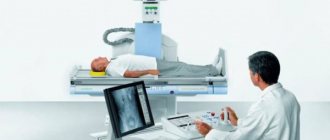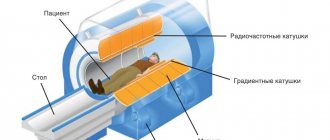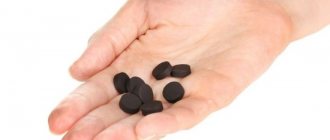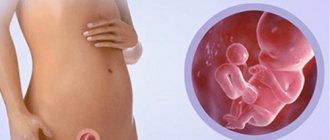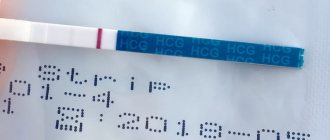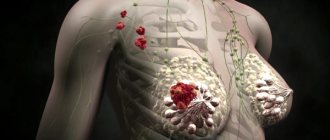General information
Very often, patients turn to otolaryngologists with complaints that they have difficulty breathing through their nose.
As a result, after examination, very often the medical history indicates that this symptom is associated with deformation of the nasal septum. A deviated nasal septum is a condition in which the septum deviates to one or both sides of the midline. With this pathology, a person has difficulty breathing through one or both passages of the nose. Other unpleasant symptoms also occur due to difficulty in the outflow of secretions from the paranasal sinuses.
The main function of the nasal septum is to ensure uniform air flow between both lobes of the nose. If it is bent, then important functions are disrupted - warming, cleansing, moisturizing. This condition (ICD-10 code - J34.2) is one of the most common ailments of the nasal cavity.
Statistics show that a displaced septum is rarely observed in children, but in adults it is very common. About half of all people suffer to some degree from the symptoms caused by this disease. Moreover, it occurs more often in men than in women.
Rhinoseptoplasty technique
The operation is performed under general endotracheal anesthesia (insertion of an endotracheal tube into the trachea and supply of anesthetic gas) and local anesthesia (injection of local anesthetics - novocaine, lidocaine). There are several types of rhinoseptoplasty:
Endoscopic septoplasty
This operation is indicated for patients with non-traumatic curvatures. The use of a fiber endoscope allows you to prevent complications such as the development of bleeding and the formation of hematomas.
Laser septochondrocorrection
The operation is bloodless and safe for patients. It is based on the fact that cartilage can change its shape under the influence of laser radiation. The operation is performed on an outpatient basis and does not require hospitalization in the ENT department. Its advantages:
- minimal blood loss
- minimal tissue trauma
- rehabilitation and postoperative period are much milder
- laser has antiseptic properties
The disadvantage of the laser is that it is not able to correct all deformations of the nasal septum, especially the bone part.
Resection-reimplantation technique
The curved sections of cartilage and bone are cut out, then straightened using a special flattener and implanted back under the mucosa. The advantage of the operation is that the patient’s own tissue usually heals well and restores the septum, preventing the development of perforation.
Classic submucosal resection according to Killian
The operation is quite outdated; its essence is to remove the curved osteochondral layer of the septum. This resection has many side effects:
- the septum becomes mobile and can vibrate when breathing;
- the nose may sag, taking on a saddle shape;
- After surgery, patients’ complaints often do not disappear (nasal congestion, mucous discharge);
- the septum may be perforated.
Pathogenesis
The nasal cavity is shaped like a prism. A vertical septum runs through the middle of the cavity, dividing the nasal cavity into two halves. It consists of two sections - anterior cartilaginous and posterior bone. The bony section is formed by the perpendicular plate of the ethmoid bone and the vomer, the cartilaginous section is formed by quadrangular cartilage.
In newborn children, the nasal septum is straight and even. It consists of cartilaginous tissue, on which there are areas of ossification. Gradually, the cartilage turns into bones, and the bones grow together. Curvature occurs during human growth due to disruption of certain processes occurring in the body. Curvature may occur due to uneven growth of the cartilage and bone parts, when one of these parts grows faster than the other. Curvatures can also develop as a result of a variety of injuries and damage. Even a minor injury can lead to damage to the growth plates and the gradual development of curvature.
X-rays of nasal bone fractures
X-ray of the bones of the skull and nose allows you to determine the degree of damage to bone tissue in a person during fractures. The bones appear as a white substance on the image. The orbits and paranasal sinuses are dark.
How to take an x-ray of the nose for fractures
An X-ray photograph of the nose is taken in lateral projections, as well as in a direct view, to determine the degree of damage to nearby tissues and the bone itself:
- how many fragments of nasal bones are there and how they are located;
- which nasal bone is damaged and how seriously;
- displacement of the nasal bones;
- are there any hemorrhages in the nasal sinuses;
The symptoms and appearance of nasal fractures in adults and children appear differently on x-rays. This is explained by the structural features of the bones of the skull and nose.
X-rays for fractures of the facial bones help to determine the degree of damage to the nasal tissues in the early stages, which allows you to choose the appropriate treatment and correct the situation as quickly as possible by repositioning the nasal bones - until the nasal bones begin to fuse and take on an irregular shape.
In children, nasal fractures occur less frequently, since the bones have a cartilaginous layer, which compresses when bruised and prevents the bones from cracking. This is nature's defense against injury as children learn to walk, explore their environment, and experience a wide range of minor injuries and bruises.
X-rays of the nasal bones in children show the presence of fractures, displacements of the nasal bones due to bruises, and cracks in the quadrangular cartilage.
Classification
The following types of this pathology are distinguished:
- crest;
- thorn;
- curvature;
- a combination of different types of pathology.
Depending on the reasons for the development of this manifestation, the following types of curvature are distinguished:
- Physiological - it develops due to the presence of a genetic predisposition to disrupt the development and growth of the bones of the skull.
- Traumatic – becomes a consequence of damage received from a blow, fall or other injuries.
- Compensatory – develops as a consequence of other disorders.
Depending on the severity of the pathology, there are:
- Mild degree - poorly expressed. Does not require treatment.
- Medium degree - the septum occupies half the distance to the lateral surface from the midline. Requires treatment.
- Severe degree - the septum almost touches the side surface of the nose. Requires immediate treatment.
Depending on the location of the curvature:
- In the anterior part - occurs more often.
- In the back - less common.
Photos and transcript
Fig. 1 – the right maxillary sinus is filled with exudate. On the x-ray, the space is white, indicating the presence of fluid and poor ventilation on the right side. The ethmoid sinus is also susceptible to inflammation. The presumptive diagnosis is sinusitis and ethmoiditis. The frontal sinuses have clear outlines, no inflammatory process is observed.
Fig. 2 – deviated nasal septum. There is fluid in the left maxillary sinus. The lumen of the left nasal sinus is narrowed. The presumptive diagnosis is unilateral sinusitis.
Fig. 3 – displaced fracture of the nasal bone. X-ray shows two fragments. Such nasal injuries are typical for boxers when hit from above or with a direct blow.
Causes of a deviated nasal septum
Depending on the type of curvature of the nasal septum, the following causes of this pathology are determined:
- Physiological – uneven growth of the skull, hereditary deformities. Most often, these reasons lead to curvature during adolescence.
- Traumatic – suffered facial injuries, fractures , strong blows leading to displacement. Most often, these reasons are typical for boys and men.
- Compensatory – pathological changes develop as a result of tumors, polyps and other neoplasms in the nasal cavity.
- Viral - changes provoke previous diseases. This may be due to previous influenza , ARVI , otitis media , sinusitis , etc.
Reasons for the development of deformity
Consequences of injuries
- 50% of patients with septal deviation develop various injuries to the nose and facial skull during their lifetime. Traumatic situations in childhood and adolescence are especially dangerous.
- Deviations of the septum of post-traumatic origin are characterized by peculiar deformations and sharp fractures.
- This category also includes birth injuries: cases have been described where, due to rapid labor or incorrect tactics of the obstetrician-gynecologist, pathology was detected even in newborns.
Abnormal growth of facial bones
- This reason is relevant in 30% of the examined patients.
- Very often, the structures of the nose grow and develop out of harmony, causing a deviated septum.
Various diseases (compensatory deformation)
In 10% of patients, pathology may occur due to:
- nasal tumors (polyps);
- hypertrophy of the nasal sinuses.
Hereditary predisposition
Modern research has proven that this pathology can be inherited and congenital.
Hypertrophy of Jacobson's organ
Also called the vomeronasal organ. It contains olfactory cells. In nature, it is found in animals for mating, as it perceives pheromones (specific odorous substances secreted by the male and female). In humans, Jacobson's organ is atrophied. In rare cases, the vomeronasal organ may become enlarged (hypertrophied), causing deformation of the nasal structures.
Symptoms of a deviated nasal septum
If the nasal septum is curved, the patient develops unpleasant symptoms indicating such a pathology.
- Nasal breathing becomes difficult. With a mild degree of pathology, a person may not experience breathing problems. But when hypertrophy of the nasal conchae occurs in the part of the nose opposite to the curvature, the lumen of the healthy part of the nasal passage narrows, and the patient begins to feel a lack of air. He develops heavy nasal breathing and shortness of breath . As a result of such difficulties, a person often gets used to breathing through his mouth.
- Chronic inflammatory processes of the sinuses. With hypertrophy of the intranasal structures, the exit from the sinus narrows, which leads to disruption of the normal outflow of mucus and insufficient oxygen supply inside. When bacterial flora gets inside, purulent inflammatory processes of the paranasal sinuses develop. If acute sinusitis or exacerbations of chronic forms occur more than 4 times a year, you should consider surgical intervention.
- Chronic rhinitis. If one half of the nose is constantly subject to functional overload, then in the wider half, after some time, rhinitis appears in a chronic form. This leads to hypertrophy of the mucosa and increased formation of mucus, which flows into the nasopharynx.
- Inflammatory processes of neighboring organs. People with this pathology often experience inflammation of the middle ear and Eustachian tube. Doctors also note that people with a deviated septum are three times more likely to develop ARVI.
- Dry nose, frequent bleeding. When distorted, excess air pressure is created on the mucous membrane, and this leads to its drying out. Dystrophic changes appear, the mucous membrane becomes thinner. Fragility of blood vessels and frequent nosebleeds are also noted.
- Deterioration of sense of smell. Since with a curved septum there are obstacles to the flow of air and odors to the olfactory epithelium, this leads to a violation of the sense of smell.
- Headache. A headache may occur due to a lack of oxygen in the blood. Hypoxia especially strongly if a person is overloaded mentally or physically.
- Snore. Since with an uneven septum the speed of air flow through the left and right nostril will be different, different pressure is applied to the uvula of the soft palate, which leads to its hypertrophy. As a result, due to the vibration of hypertrophied areas, a person snores in his sleep.
- Changed nose shape. If the septum is bent due to reasons related to injury, then the shape of the nose also changes. It shifts to the left or right, and humps form on its back.
- Fast fatiguability. Due to breathing problems, a person may not feel very well, which is why he gets tired quickly.
The listed symptoms appear depending on the degree of curvature
Is it necessary to straighten a deviated nasal septum?
Many patients cannot decide for a long time to undergo surgery to remove a deviated septum. Many people get used to a constantly stuffy nose, chronic sinusitis and other consequences of a crooked nose. Yes, indeed, the pathology is not fatal, you can live like this. And any operation is a risk.
But there is also such a thing as quality of life. According to reviews from patients who underwent septal alignment, only after the operation did they understand that this quality may vary. When you breathe like a normal person, you begin to smell all the smells, constant headaches and depression go away, life begins to play with new colors.
Tests and diagnostics
As a rule, diagnosis is not difficult. An otolaryngologist can confirm this diagnosis by performing a direct rhinoscopy of the nose. If the curvature is localized in the deep parts of the nose, additional research methods may be required to determine it.
In general, the following methods are used to establish a diagnosis:
- External examination - during the process, the specialist evaluates the appearance of the nose, evaluates nasal breathing and sense of smell.
- Rhinoscopy – examines the nasal cavity using special instruments. Anterior and posterior rhinoscopy may be performed. Anterior rhinoscopy is performed to study the features of the nasal cavity and the formations that exist there (polyps, tumors, abscesses , hematomas). To perform anterior rhinoscopy, a nasal dilator and a special probe are used. Posterior rhinoscopy is used to examine the nasopharynx and nasal cavity, it is performed from the side of the mouth, it is performed using a spatula and a mirror.
- Videoendoscopy is a visual examination of the nasal cavity using an endoscope.
- X-ray of the paranasal sinuses.
- Computed tomography scan of the paranasal sinuses.
- Laboratory blood tests.
In order to determine whether a patient needs surgery, it is important to conduct a comprehensive diagnosis.
Possible complications after surgery
- formation of postoperative adhesions, synechiae;
- perforation of the nasal septum;
- allergic reaction to anesthesia (swelling of the larynx, drop in blood pressure, cardiac arrest);
- oculomotor nerve palsy, blindness;
- injury to the cribriform plate, which threatens the leakage of cerebrospinal fluid from the nasal cavity;
- the formation of a hematoma or abscess between the layers of the mucous membrane;
- disturbances in the sense of smell up to its complete absence;
- deterioration of mucosal function (degenerative changes).
In the postoperative period, patients are usually recommended:
- washing with saline solutions (Aqua-Maris, Aqualor) from 2-3 days - to moisturize the mucous membrane;
- avoid heavy physical activity;
- do not fly on airplanes (due to sudden changes in atmospheric pressure);
- for 2-3 months do not be exposed to sudden climate changes, do not get hypothermic or overheated, do not visit baths and saunas.
Treatment with folk remedies
The use of traditional methods for such pathology is often practiced. But it is still important to understand that any traditional methods can only alleviate the condition, but do not help get rid of the pathology.
- Herbal infusions and decoctions. It is recommended to drink herbal decoctions that have anti-inflammatory properties. You can make tea from chamomile, mint, lemon balm, St. John's wort, etc.
- Lotions with essential oils. To carry out such a massage, you need to take essential oil of fir or eucalyptus, drop a few drops of this oil into a small amount of water and moisten a cotton pad in it. Apply the lotion to your nose and hold for 15 minutes.
- Massage with propolis ointment. Propolis ointment should be applied in a circular motion to the cheeks near the nose. It will help relieve congestion. You can also use “Star” balm for this purpose.
- Washing. You can rinse your nose with saline solution, a decoction of string or chamomile. The prepared solution must be inhaled alternately through each nostril and exhaled through the nasopharynx.
- Garlic and onion. If the pathology occurs as a result of a viral process, you can instill a solution of garlic and onion into the nose. You need to take one part of onion and garlic juice, mix it with five parts of water. The product should be instilled into the nose 5-6 times a day. This will help stop viral processes.
- Beet juice. Fresh beet juice should be dripped into each nostril - 3-4 drops three times a day.
- Honey. If allergic to honey, you can drip honey dissolved in water into your nose (one part honey, two parts water). This is done 3 times a day.
- Aloe compress. Wrap a quarter of an aloe leaf in gauze and apply to each nostril in turn.
- Honey and black radish. Grate the radish, mix with an equal part of honey, wrap in gauze. Place in each nostril one at a time and hold for 15 minutes.
Deviated nasal septum in a child
If a child's septum is deviated, his nasal breathing is impaired and a chronic runny nose develops. Sometimes children with this pathology breathe through their mouths and snore during sleep. Frequent cases of nosebleeds may also occur. Their acute respiratory infections are often complicated by sinusitis and sinusitis . Often the curvature leads to the development of diseases of the auditory tubes, vasomotor rhinitis , etc. It is very important to visit a pediatric otolaryngologist in a timely manner and consult with him about treatment.
If a child has severe curvatures and severe nasal breathing impairment, he may be prescribed surgical intervention after reaching 6 years of age. If there are no obvious violations, the operation is performed at 14-16 years of age.
Contraindications and restrictions
Contraindications to X-ray examination include pregnancy and children under 7 years of age. The influence of gamma rays on the fetus can provoke the development of pathologies. The procedure can be performed if it is impossible to do an ultrasound or the woman’s health justifies the possible risk to the fetus.
Are radiography prescribed for children?
It is not advisable to send children for x-rays due to the negative effects of radiation on the skeletal system. However, if there is no alternative, if the doctor considers it necessary to take an x-ray, you should not refuse. Some experienced ENT doctors and radiologists believe that the diagnostic method is suitable for children from 5 years of age.
Diet
Diet to boost immunity
- Efficacy: therapeutic effect after 3 weeks
- Terms: 1-3 months or more
- Cost of products: 1600-1800 rubles. in Week
If you have a deviated nasal septum, you need to eat a varied and nutritious diet to prevent a deficiency of minerals and vitamins . Their deficiency negatively affects the state of the immune system. Therefore, the daily menu should contain vegetables, fruits, a sufficient amount of protein dishes, fatty fish, nuts, etc.
Consequences and complications
The consequences of a deviated nasal septum in the absence of proper treatment can be quite unpleasant. First of all, the consequences of this pathology are constant nasal congestion and headache. As complications, sinusitis , frontal sinusitis , and ethmoiditis (inflammatory process of the frontal sinus) can develop.
If the curvature is severe, the Eustachian tube, the channel connecting the ear and nose, can become blocked. As a result, the pressure in the ear cavity increases, which leads to swelling and otitis media. Often people who write on this or that thematic forum also complain about hearing impairment due to this pathology.
If the septum is severely deviated, this results in less oxygen entering the body. Oxygen starvation negatively affects all organs, especially the brain. Therefore, people with this pathology often complain of constant fatigue and weakness.
What does radiography of the paranasal sinuses of a healthy person show?
The specificity of X-rays is such that the rays are delayed by the fluids in the nasal sinuses and are reflected in the image as white spots. The larger the spot, the stronger the inflammatory process. Normally, x-rays of the sinuses show healthy areas in a darker color. Such places are located on both sides of the nose and on the frontal part. There are four of them in total. In a healthy state, all four sinuses are visible on an x-ray and have clear outlines.
If there are no dark spots on the x-ray, then the nasal sinuses are completely filled with fluid and the pneumatization of the upper respiratory tract is impaired.
Pneumatization of the sinuses is the presence of air cavities of a certain volume that help the normal functioning of the respiratory system.
With a decrease in pneumatization of the nasal sinuses, disturbances in the functioning of the upper respiratory tract occur, which require conservative or surgical treatment.
An X-ray of the nose just shows how much the nasal sinuses are filled with fluid, whether there is tissue growth in the paranasal sinuses or tumors of the nose. In a photograph of the nose, this process looks like a larger or smaller light spot.
List of sources
- Atlas of operative otorhinolaryngology. Ed. Pogosova V.S. M.: Medicine; 1983:416.
- Bondarenko HA Some functional changes in the body with a deviated nasal septum / HA Bondarenko // Abstract. Diss. Candidate of Medical Sciences Sci. -Kiev, - 1970. P.20.
- Soldatov I.B. Lectures on otorhinolaryngology: Textbook. 2nd ed., revised. and additional M.: Medicine; 1994:288.
- Tsarapkin G.Yu., Kryukov A.I., Tovmasyan A.S., Gorovaya E.V., Usacheva N.V., Panasov S.A. Septoplasty for deviation of the perpendicular plate of the ethmoid bone. Russian rhinology. 2017;25(1):25-30.
Types of septoplasty
Surgery on the nasal septum in modern medicine is performed in several ways. For complex deformities that require removal of part of the lateral wall or its reconstruction, endoscopic septoplasty is indicated. For minor septal defects, you can get by with an alternative method - laser septoplasty.
The procedure does not require a long hospital stay and is performed under anesthesia. Minimal tissue damage guarantees fast and trouble-free healing.
Submucosal resection
The oldest method of correcting defects in the nasal wall. Classic surgery to straighten the nasal septum involves resection of small areas of the lateral wall that interfere with its normal functioning. In this case, the epithelium is carefully peeled off, which allows you to maintain its integrity and reduce bleeding. The procedure is performed under general anesthesia.
Submucosal resection is the most ancient and traumatic method of correcting the nasal septum.
Surgery for a deviated nasal septum at the site of injury requires elimination of the deformed areas with subsequent formation of the lateral wall anew. With appropriate preparation for the removal of defects and the right attitude, the operation is painless and with minimal damage.
Endoscopic septoplasty
This term means correction of the median wall of the nose using video equipment, which allows for precise and least traumatic manipulations.
Typically, this operation to straighten the septum lasts 20–40 minutes. Its duration depends on the degree of curvature of the plate, the presence of spines and ridges. Pain relief can be either general or local. Before the intervention, the patient is given premedication, which reduces the level of anxiety and prepares the patient for further manipulations.

